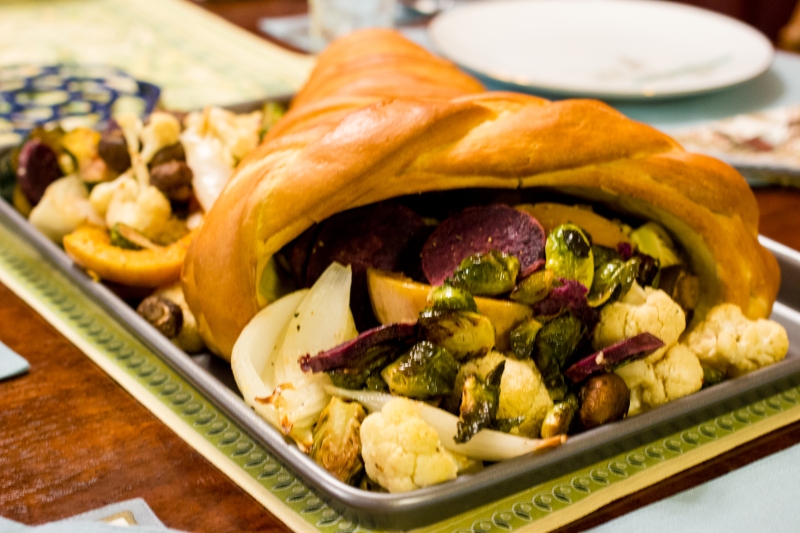The cover of this year’s Thanksgiving issue of Vegetarian Times had the loveliest food I’ve ever seen: a bread cornucopia stuffed with colorful roasted vegetables. I knew I had to have it, so I made one for Thanksgiving! I mean, vegetables and bread are my two favorite things to eat, so there was really no way I wasn’t going to try it.
I started off following the dough recipe for the cornucopia. The dough rises overnight in the fridge into a massive amount so make sure you use a large bowl.

To create the cone of the cornucopia, you have to form a cone out of poster board and then cover it in foil and cooking spray.

I then used sections of the dough to roll it out into rectangular sheets, cutting 20″ x 1.5″ strips and then wrapping them around the cone while it was standing up, starting the bottom. The last bit of dough was used to create 3 additional strips and braid them. I laid the cornucopia on its side and then added the braided strip, so it did not go all the way around.

The cone then went into the oven. About half way, I had to remove the foil / posterboard cone from the dough, which was not the easiest thing to do.
In the meantime, we prepped many colorful veggies to prepare using the recipe Fork and Knife Roasted Vegetables. We used mushrooms, acorn squash, butternut squash, purple sweet potato, onion, and cauliflower. We also made the recommended Essence of Thanksgiving Gravy.


We very carefully transported the cooled cornucopia to our friend’s house, and kept the veggies in a separate container until it was time to put everything together on the table. 
I was soooo pleased with the final result. And it was good too, not just pretty! Everyone ate a bit of the cornucopia bread, and we even took home the leftovers and continued to eat the bread with our thanksgiving leftovers until it was gone.













































